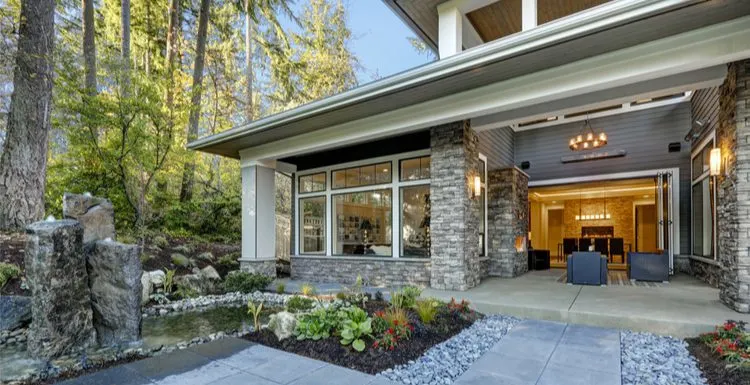There are many types of stone siding. While each one has its own pros and cons, any type you pick is better than simple MDF alternatives.
Read on to learn about each type, why stone is better, and much more.
Types of Stone Siding: A Summary
Stone siding is one of the most sought-after home exteriors by homeowners. Builders have been using this siding for centuries, and time has proven that it’s unmatched in terms of beauty, durability, and style.
Today, stone siding is available in several types and designs. There are five general types, including:
- Solid Stone Siding
- Natural Stone Cladding
- Manufactured Stone Siding
- Veneer Panel Stone Siding
- Polyurethane Faux Stone Panel Siding
In this article, we look at the advantages and disadvantages of these various types and other things you should consider when selecting one.
The Different Types of Stone Siding
The different types of stone siding are divided into natural and artificial. Natural stone siding has been around for centuries.
Manufactured stone siding exists to counter the cons of natural stones that make them unpractical for many homeowners.
The availability of different types makes it easy to find a stone siding that fits your needs and preferences to a T.
1. Solid Stone Siding
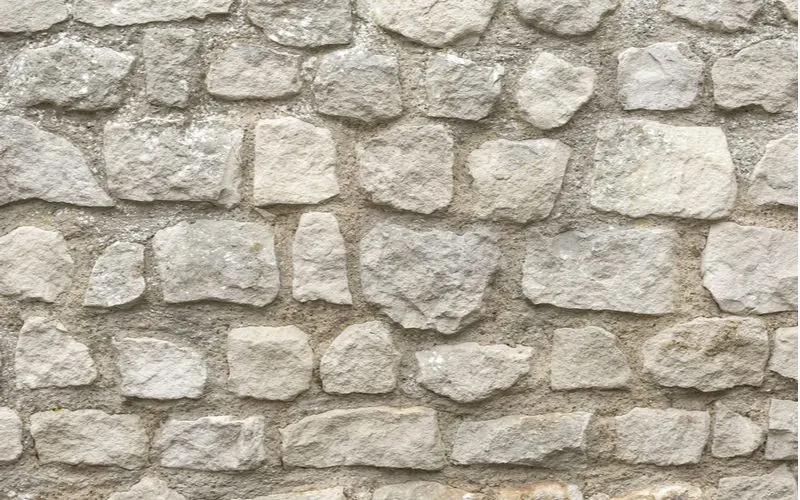
Stephen Plaster/Shutterstock
Solid stone siding is the type to go for when looking for the most authentic natural stone home exterior.
You’ll find this siding mostly on old homes and castles. Solid stones are harvested, then set into the mortar in their natural shape and size.
They don’t undergo any processing or manufacturing. Hence, they’re heavy, making them costly to deal with and install.
Their weight adds up to the shipping costs. Also, a lot of skilled labor is required to set the stones in mortar. This process takes time, which means you’ll be spending more on workers.
In addition, your masons need special equipment to install the stones, which results in higher costs. Solid stone siding is also challenging to find since many homeowners avoid it due to its cost inefficiencies.
If you decide to go with it, you’ll have to look for a specialty dealer. This siding was the inspiration behind the development of manufactured stone siding.
Many homeowners desired stone siding but couldn’t afford the cost. That’s when manufacturers introduced other types that imitate the excellent qualities of solid stone siding while mitigating its undesirable traits.
2. Natural Stone Cladding
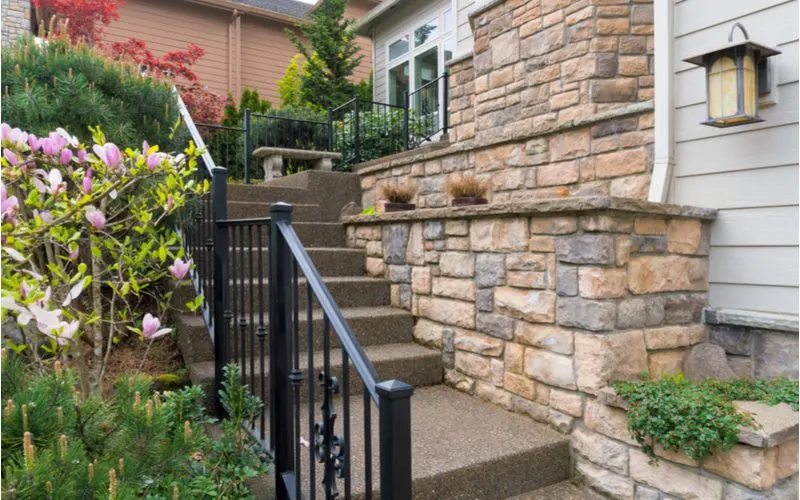
JPL Designs/Shutterstock
Natural stone cladding is your next choice if you’re looking for siding made entirely of natural stones. But, unlike solid stone siding, this type goes through cutting before being set to mortar.
After the stones get harvested from the earth, they’re cut to size to make them less bulky and easier to install. Hence, they take less time to put in place than solid stones, which come in all shapes and sizes.
While natural stone cladding attempts to solve some of the inefficiencies of solid stones, it still shares most of its cons. First, while natural stone siding is slightly lighter than solid stone, it’s still much heavier than other siding types.
Second, it requires specialized installation and can be hard to find in most retail stores selling siding. Another major disadvantage of natural stone cladding is that it can be porous.
Marble, granite, sandstone, and quartzite are some of the stones manufacturers use to make this cladding. These stones are prone to freezing during frigid weather. At higher temperatures, their porosity increases, making them more absorbent.
3. Manufactured Stone Siding
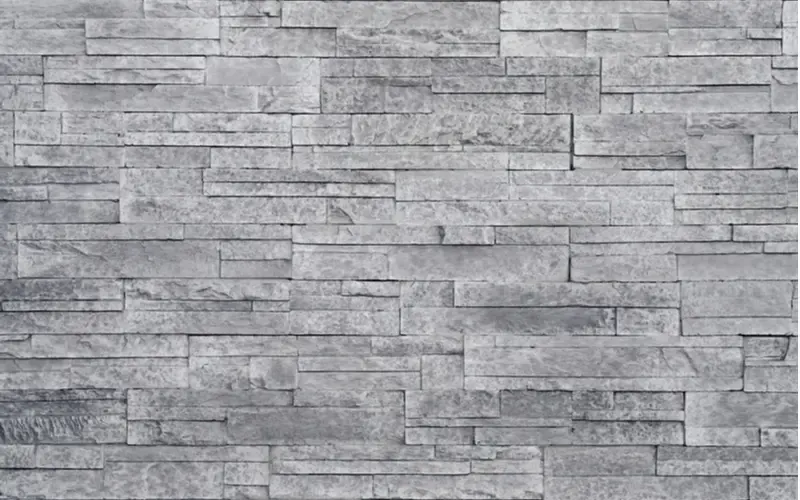
Louno Morose/Shutterstock
Manufactured stone siding allows you to enjoy the look of real stones on your home’s exterior without spending a fortune.
Also known as cultured stone siding, this siding boasts all the positives of natural stones while doing away with the less desirable traits.
Manufacturers don’t use any natural stones to make this siding. Instead, they use molds to make cement stones using Portland cement, natural aggregates, and iron oxide for coloring.
The molds have shapes like stones, which gives cultured cement stones a natural appearance. The components used in making manufactured stone siding make it much lighter than the types mentioned earlier.
Less weight means more affordable shipping, labor, and installation costs. This solves the most significant setback associated with natural stone siding.
The manufacturing process for this siding also allows for more styles and colors. While natural stone siding is limited to naturally occurring shades, manufacturers can make it in various colors.
4. Veneer Panel Stone Siding

Konstantin L/Shutterstock
Veneer panel stone siding provides you with a middle ground between natural and artificial stone siding. The panels use natural stones, which get processed into thin panels.
They, therefore, lack the all-natural look of solid stones that have been harvested and set into mortar without alteration.
They’re also more processed than natural stone siding because they’re made into flat panels resembling tiles. As panels, these stone veneers are much easier to install than other types made of natural stone.
They come in regular shapes that fit together and are lightweight to handle. While veneer panels are cheaper than natural stone siding, they’re more expensive than synthetic stone siding because they include real stones in their makeup.
5. Polyurethane Faux Stone Panel Siding
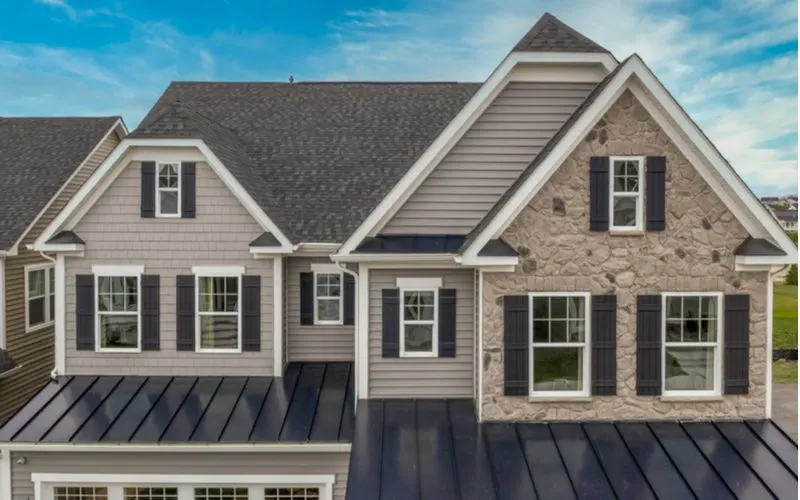
Tokar/Shutterstock
One of the types of vinyl siding includes a stone design, which is made with synthetic materials and doesn’t contain real stones or natural aggregates.
Manufacturers make it with a high-density polyurethane base mixed with fire-resistant materials and UV inhibitors.
The resulting product resembles stones and has properties that imitate the qualities of natural stone siding. It’s thick and sturdy, weatherproof, and can last for decades when made with high-quality materials.
This siding is more lightweight than all the other types we’ve mentioned on this list. Also, manufacturers make it in panels, which are faster to install than individual stone pieces.
If you’re not bent on buying real stone siding, this type is a great bargain. While it doesn’t contain any real stones, its appearance doesn’t give this away. Only by touch can one tell the difference between faux stone siding and natural varieties.
Things to Consider When Buying Stone Siding
Here are five things to consider when looking for stone siding to help you land a type that’s suitable for you:
Budget
Your budget is a great place to start since cost is a primary factor that determines which type you can afford.
Solid stone and natural stone siding are more expensive to buy, transport, and install than other types.
If your budget doesn’t allow for this spending, you’ll fare better looking at synthetic types or natural stone veneers.
Durability
How long will the siding last? High-quality siding should last as long as your house does.
Real stone siding is more durable, able to last hundreds of years. Other types can last for decades, with the minimum duration being around 20 years.
The longer your siding lasts, the more value it’ll provide. When looking for faux stone siding, opt for panels made with high-grade materials and modern technology to ensure you get as many decades out of them as possible.
Real or Faux?
While there are various types of stone siding, they all come down to two categories: real and faux. Before beginning your search for the ideal siding, decide which of these you want.
Keep in mind that your property’s structure will also determine the most viable option.
For instance, some houses cannot hold the weight of solid or natural stone siding. In such a case, you’ll have to settle for more lightweight types.
Maintenance
Each stone siding comes with different maintenance needs. Some, like solid stone siding, are low-maintenance.
Natural stone can stand harsh weather for years without losing its appearance, texture, or durability. You may only need to repoint or brush it if there’s a buildup of dirt and dust.
Natural stone siding, on the other hand, requires frequent maintenance. You’ll need to seal stones such as granite and marble about twice a year to reduce their absorbency rate.
Without a seal, they’ll readily absorb moisture, which might ruin their appearance and integrity. Synthetic siding requires a simple wash with clean water and soap when dirt builds up.
Avoid harsh cleaners or rigid brushes, as these can scratch the surface and cause fading. It goes without saying that it’s important to install the type of siding you can adequately maintain.
Design
Do you want siding with a rugged look or one with a polished surface? Are you looking for natural stone colors, or do you want to explore other shades?
Stone siding types are available in a range of colors, textures, shapes, and sizes. Identifying the design you want makes your search more effortless.
Frequently Asked Questions
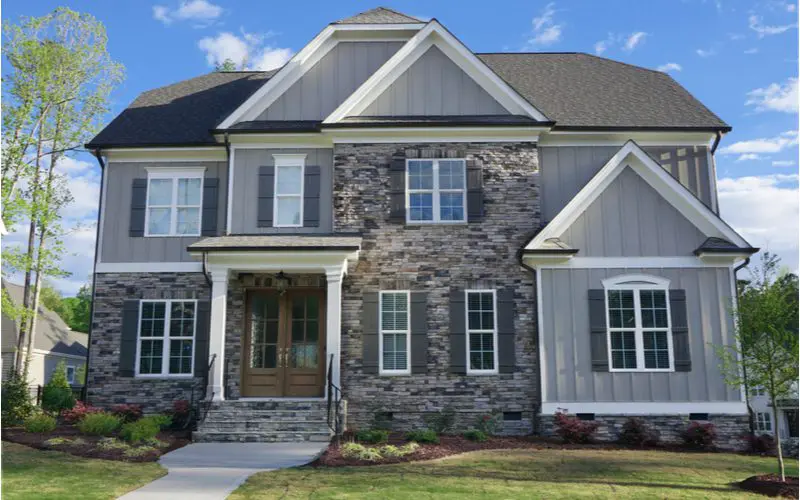
PT Hamilton/Shutterstock
What materials are used to make faux stone siding?
Faux stone siding uses a foam-like material containing polyurethane. Polyurethane is a durable, resilient, and flexible material that easily fashions into various shapes and sizes. It also provides superb insulation in both hot and cold climates.
How long does stone siding last?
A stone siding can last anywhere between twenty years to a century. Siding made of natural stones lasts longer than manufactured or faux types.
Does stone siding require maintenance?
Yes, to last long and keep looking new, stone siding requires maintenance. Each type has distinct maintenance needs, so check with the manufacturer before working on your siding to avoid interfering with its integrity or appearance.
Do I need professionals to install my stone siding?
It depends on the type of siding you’re using. Solid and natural stone siding requires special equipment to install correctly, so hiring a professional is advised. But with faux stone panels, you can do without a professional since they’re lightweight and much easier to set on mortar.
So, What Are the Types of Stone Siding?
It’s hard to replicate the aesthetic appeal, durability, and insulation capabilities of stone siding with other types of siding.
And, with the various types of stone siding on the market, you have more than enough options.
As long as you choose carefully, you’ll be able to transform your house and enjoy the benefits for decades to come.

